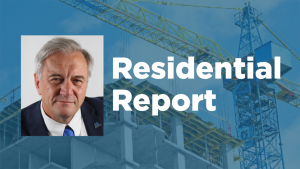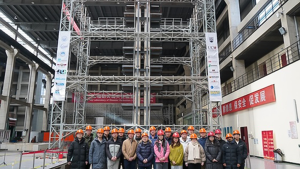Now more than ever, Ontario construction companies need to take a hard look at how health and safety is being managed in the workplace, and take proactive steps to mitigate the potential consequences of Ontario’s enforcement onslaught.
Now more than ever, Ontario construction companies need to take a hard look at how health and safety is being managed in the workplace, and take proactive steps to mitigate the potential consequences of Ontario’s enforcement onslaught.
Several new enforcement initiatives by the Ministry of Labour (MOL) will hit the Ontario construction industry hard. The Government of Ontario is committed to reducing workplace accidents and has hired more MOL inspectors to strictly enforce the OHSA, initiated more prosecutions, and recommended higher fines and even jail terms for individuals charged with offences.
The cornerstone of the MOL’s enforcement initiative was the hiring of an additional 200 inspectors. The hiring blitz brought the total number of MOL inspectors to 430, which translates into a rate of 5.4 inspectors per 100,000 workers, second only to British Columbia, which has a rate of 9.2 inspectors per 100,000 workers.
Using data from the WSIB, the MOL has identified and will target “high-risk” employers in the construction industry. Based on an analysis of the cost of each employers’ lost time injuries since January 1, 2000, the MOL has identified 6,000 firms whose workers were injured more often, whose compensation costs were higher and whose injuries were more costly when compared with other firms in their sectors.
Inspectors will visit these sites four times a year and will use a full array of enforcement tools to reduce the number of injuries in these workplaces.
The MOL recently published its enforcement activity statistics from 1993 to 2003, which indicated that prosecutions and the amount of fines were already on the rise. The number of prosecutions in recent years has risen considerably – from 287 in 2001 to 618 in 2003 – an increase of 215 per cent over those years. Between 1993 and 2003, the MOL collected nearly $55 million in fines. During the same 10-year span, convictions in the province increased at a rate of 5.56 per cent per year, while fines collected increased at a rate of 7.5 per cent per year.
Upon conviction of a violation of Ontario’s OHSA or its regulations, a corporation faces a maximum fine of $500,000 per offence. An individual convicted under the OHSA or its regulations faces a maximum fine of up to $25,000 per offence and/or up to 12 months imprisonment per offence. All provincial fines over $1,000 are also subject to a 25 per cent victim surcharge. The construction industry continues to be targeted for prosecutions by the MOL.
Several recent construction industry cases from across Ontario suggest that the MOL is more actively seeking convictions against individuals as well as corporations, and pushing for jail terms for individuals that are convicted of violations of the OHSA. On May 26, 2005, a truck driver was sentenced to 20 days in jail per count upon a conviction of two violations of the OHSA that resulted in the death of a co-worker.
In two separate sentencing hearings in December 2005, MOL prosecutors argued for substantial jail terms for individuals involved in two separate fatality cases.
In Toronto, an MOL prosecutor argued that the actions of a supervisor employed by a forming contractor contributed to the death of two employees. The MOL, who argued that the defendant’s actions bordered on being criminally negligent, recommended a three-month jail term for the supervisor.
In a December 8, 2005 ruling, the supervisor was fined $15,000 on each of two counts under the OHSA and was placed on probation for one year. Also, the forming contractor was fined $150,000 on each of two counts under the OHSA. During the same week in Sault Ste. Marie, a judge ruled that the actions of both a supervisor and a worker contributed to Allen Manchester’s death at an Algoma Steel facility on October 15, 2003. The MOL recommended a four-month jail term, or a fine of $15,000 for the supervisor, and a two-month jail term, or a $10,000 fine for the worker. In addition, the MOL sought fines against the employer of up to $300,000 on each of three counts. A ruling in that case is pending.
Considering these cases and hearing the MOL label its plan as a “positive action to address concerns about inadequate enforcement of the OHSA,” undoubtedly invokes concern for employers.
Due diligence is a legal defence to OHS and other regulatory charges. Due diligence is also, more broadly speaking, the application of the internal responsibility system in Ontario health and safety law by establishing an effective Occupational Health and Safety Management System.
Implementing an effective OHSMS in order to prevent lost time accidents and fatalities, as well as to minimize legal risk by establishing a due diligence defence before an accident occurs, is becoming increasingly important. Auditing your existing OHSMS is critical to ensure it meets the minimum legal requirements. Hiring a law firm to conduct that audit also assures it is protected under solicitor-and-client privilege. In addition, managers and supervisors must understand due diligence, their legal rights and responsibilities and how to deal with an MOL inspector when one visits your workplace.
You should consider implementing a system that contains detailed directions on the rights and responsibilities of workplace parties, forms to comply with legal reporting obligations and a checklist to assist your organization in preparing for and responding to any such workplace incident as a fatality, critical injury, or an MOL investigation.
Finally, you should consider inviting the MOL inspector in your area to attend and tour your workplace in order to attempt to establish a cooperative and constructive relationship. Failing to ensure the above-noted due diligence best practices have been implemented at your workplace could leave your organization exposed to the impending MOL crackdown.
It remains to be seen whether more enforcement by prosecutions will improve workplace health and safety. However, one thing is for certain, with all the new MOL inspectors on the street, it will be more important than ever to take every reasonable precaution to protect your workers.
Norm Keith, B.A., LL.B., CRSP is a partner at Gowling Lafleur Henderson LLP in Toronto, and leads the firm’s national occupational health and safety and workers’ compensation practice.










Recent Comments
comments for this post are closed